The box office for premium large format cinemas is forecast to beat $4bn by 2034, so it’s no wonder competitors are biting at the heels of Imax, with Vue the latest to enter the fray.
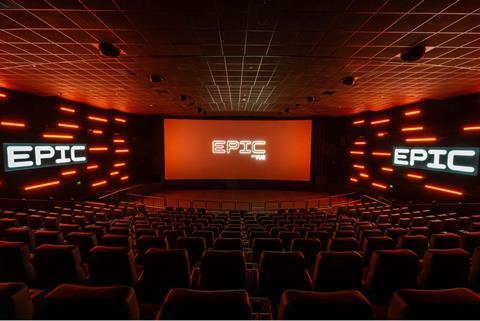
It is the Godzilla v King Kong-like battle of the big screens: leading exhibitors across the UK, Europe and beyond are trying to wrestle back control from market leader Imax, and to capitalise on their own premium large format (PLF) brands.
This isn’t new. Exhibitors have competed to give audiences immersive experiences on huge screens for generations. In the 1950s, when the industry was battling TV and 20th Century Fox successfully introduced CinemaScope, its rivals came up with their own widescreen formats, including VistaVision, WarnerScope, Todd-AO and SuperScope.
Something similar can be seen today with every major operator in the game. In the UK, Cineworld currently offers audiences a choice of Superscreen (huge screens, Dolby Atmos speakers), ScreenX (a panoramic film format), 4DX (strobe lighting, water, wind and scents) and Imax. Other operators, such as Showcase with XPlus (supersized screens, 360-degree Dolby Atmos sound) and Odeon with iSense, likewise trumpet their larger-than-life experience.
The Imax corporation has been in existence since the late 1960s. Audiences recall the Imax documentaries from the late 1990s and many saw James Cameron or Christopher Nolan blockbusters on those big screens a few years later. The success of those movies spurred on the growth of PLF formats: Cinemark XD (Extreme Digital Cinema) was launched in 2009, followed by Regal Premium Experience (RPX) in 2010 and Dolby Cinema in 2014.
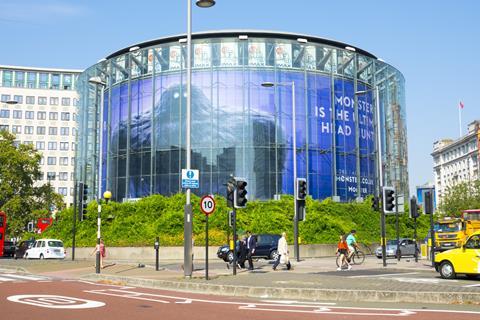
Imax has always tried to differentiate itself from such competitors and dislikes even being bracketed as a PLF brand. A spokesperson points out that it is an “end-to-end technology” company with cameras, proprietary post-production and sound systems, and theatre architecture as well as screens.
Some operators are becoming increasingly wary of what they see as the Imax “levy” — the cut of box office receipts they hand over to the company for every Imax ticket sold. Sources claim exhibitors pay Imax “mid to high teens” percentages on tickets sold — and the studios pay Imax “somewhere in the 10%-12% range”.
“Imax always wins because it takes so much of the studio’s and the exhibitor’s box office,” notes one industry observer. The upside of developing inhouse PLF brands is that operators avoid paying licensing fees to Imax.
By any measure, though, Imax is having an exceptional year. According to a spokesperson, it had “delivered over $720m in box office” by the end of July 2025 and was on course for a record $1.2bn in global box office for the entire year.
F1: The Movie alone racked up $85m in its initial Imax run and remained in cinemas throughout much of the summer. And in recent months, Nolan’s sword-and-sandal epic The Odyssey sold out at several sites on Imax 70mm — a full year before its official release on July 17, 2026.
Epic rollout
Even so, rivals are questioning whether Imax really does offer a cinemagoing experience no other format can match. Many would acknowledge it is difficult to trump venues such as London’s BFI Imax cinema, with its 65ft high screen, the largest in the UK. Nonetheless, it could be argued there is not a monopoly on technical excellence, and the strength of Imax now lies as much in its marketing as in its actual technology.

That is the perspective of Vue CEO and founder Tim Richards, as he seeks to roll out his company’s own Epic PLF across its cinemas in the UK and Europe. By mid-September, UK Vue sites in Nottingham and Castleford had Epic screens in place. The company’s target is to open at least 11 Epic screens in the UK, Italy and the Netherlands in 2025, and an additional minimum of 50 Epic screens across Vue’s European estate by the end of 2027.
The format, for which premium ticket prices are charged, works with Barco laser projection technology and Dolby Atmos sound. “We are effectively buying the very best kit available and creating our own PLF,” says Richards.
Vue was experimenting with premium formats, such as its VueXtreme supersized screens, back in 2012. These were warmly received, but Vue insiders acknowledge the company took its “eye off the ball” and started treating VueXtreme as “just another screen”. The format had “petered out” by the start of the pandemic.
The Epic launch comes after an “18-month journey” in which Vue looked at all the technology and systems available, says Richards. “We realised we were slightly behind in PLFs. It didn’t bother us that much because we had fewer screens than Odeon or Cineworld in the UK and we were outgrossing them.”
Richards himself grew up with Imax, “but it feels like somewhere along the road, they have lost their way. They’re no longer about the big-screen experience. They’re about something else.”
The Vue boss was taken aback by Imax’s deal earlier this year for Mercedes cars to be installed with an Imax-enhanced entertainment system. “That doesn’t feel like a big-screen experience,” he says of passengers watching movies in cars.
Richards also expresses surprise at Imax’s two-week exclusive deal with Netflix to show Greta Gerwig’s Narnia adaptation on 1,000 screens from November 26, 2026 — a deal that flaunts the theatrical release window exhibitors had agreed with the studios. The film is due to start streaming on Netflix on Christmas Day, a month after the theatrical rollout but less than the 45-day period of theatrical exclusivity called for by US exhibitors organisation Cinema United.
“Our relationship with our real partners, the studios, has never been better,” says Richards. “Our support and loyalty lies to our partners, not to Netflix. The main thing for us was the technology. Imax has really turned into a marketing company and less of a technology company.”
Vue has Imax in several of its venues, including one in the CinemaxX multiplex in Copenhagen that is among the top-grossing Imax sites in Europe, as well as a huge screen in Birmingham in the UK. There are no plans to discard these facilities. “This is not a Vue versus Imax battle,” emphasises Richards. “This is simply us going forward in another direction.
“The technology being used by other PLF providers, including Imax, tends to be 10 to 15 years old and HDR by Barco is 18 months old,” he continues. “With [its] light steering technology and HDR, [Barco] is a genuine gamechanger for projectors.”
For his part, Imax CEO Rich Gelfond remains confident Imax projection systems, cameras and screens are far superior to the technology offered by anybody else.
“Just because some people are blowing smoke doesn’t mean there is a fire,” states Gelfond. “Imax is having one of its best years ever. There may be a couple of people saying, ‘I’d like to take on Imax if I could,’ but to me that’s not a real thing.”

Gelfond is withering about some of the competitors: “The technology Vue is using was offered to us and we did not have any interest in it.”
Perhaps most importantly, Hollywood’s pre-eminent filmmakers continue to endorse Imax and use its technology. It was noticeable that when David Keighley — Imax chief quality officer and, in the company’s words, the “steward of Imax’s image and sound quality” — died in late August, Cameron, Nolan, Francis Ford Coppola and Denis Villeneuve each paid effusive tribute to what Nolan called Keighley’s “uncompromising standards”.
Summing up the debate over rival PLF formats, the Imax boss draws a comparison with “supermarkets that make their own cola because they can sell it cheaper than Pepsi and Coke”.
It is not enough, he continues, to put an “X” on a screen format’s name and claim it is an equivalent to Imax — consumers, he says, see straight through such ruses. Nor does Gelfond accept criticism that Imax terms are too tough on the studios and exhibitors. In recent months, the company has signed new deals with AMC, Regal and Kinepolis, proving, says the executive, that exhibitors accept its terms.
“They’re pretty good at maths and I think the numbers work,” says Gelfond. “If you’re a niche operator somewhere in the world, you may want to convince yourself [otherwise] but if you look at what most sophisticated people think, they believe our pricing is fair. And the filmmakers we work with are the best in the world. They understand the distinction better than anyone when they lean into Imax.”
In short, then, Imax is not going to budge. Recent research suggested global PLF cinema was worth $1.85bn in 2024 and is forecast to reach $4.11bn by 2034. In 2024, PLF screens accounted for a reported 15.6% of North American box office. Those eye-watering numbers mean it is little surprise operators everywhere are continuing to join the PLF gold rush.

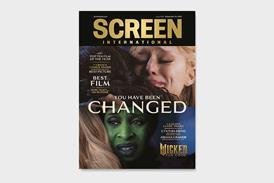
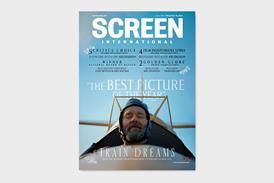













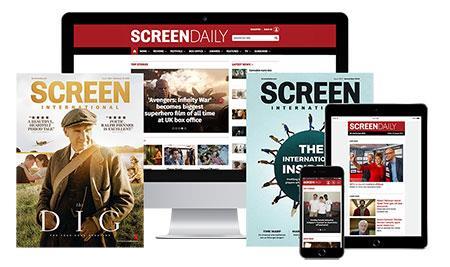






No comments yet